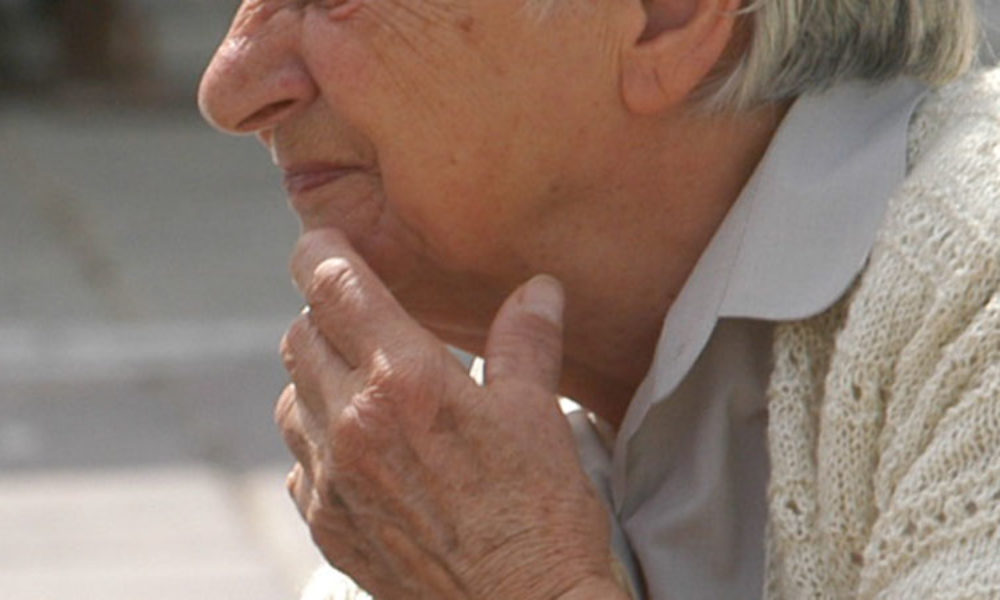Who is cycling is just not falling all the time, ‘but you do that without thinking’ ‘
:format(webp)/s3/static.nrc.nl/images/gn4/stripped/data126673488-d04b97.jpg)
He no longer knows what it felt like to learn to cycle as a child. « And now it goes without saying, » says Marco Reijne (37). Cycling is so common that it seems almost strange to explain what it is. To start with the bike: two wheels, a handlebar that can rotate and a frame. « What I find special is that the design is so simple, and in the base has been the same for so long. You can move with it very efficiently, but it is very unstable. If you don’t do anything, you fall over. You have to constantly steer to stay up. That sounds very tiring, but the bike is so designed that you help it without thinking. »
But because of which disruption people fall, how you can prevent that, and how you can measure whether something works – before you take a new bicycle design in production, for example – it turned out that a world was investigating. Marco Reijne obtained his PhD in March for his investigation into falls due to balance loss on the bike.
Reijne studied Aerospace Technology at TU Delft and got his master’s degree in designing a new type of pole for high-spring. « I really like sports. » And then his later promoter came with a question from bicycle manufacturer Gazelle. He worked with Bosch Ebike on a ‘balance assistant’, a motor in the handlebars that helps cyclists to steer well. But how well would it work to prevent falls? Reijne became enthusiastic, also because cycling is so common. « And I really like cycling. »
Most people are not injured by a collision, but because they get out of balance. It is unimaginable how much should not go well if you encounter an obstacle. We are sitting on a bench at a crossroads in the Theresiastraat in The Hague, hoping to witness a balance disturbance with a good outcome. But the only thing we see are cyclists who are flexibly roaming a maneuvering truck. And a man who swings with one leg over the saddle of a ladies’ bike. Cycling is all routine.
Maximum permitted steering disruption
Balancing on the bike is like falling. « If you want to make a bend to the right, send lightly to the left. Then your bike immediately falls to the right and so the bike will automatically send to the right. Until the contact points of your tires on the floor are under your center of gravity. Then the balance has been restored. »
Usually you don’t fall. By moving your handlebar, you stay in balance, even if you hit a curb, for example. But how strong should the balance actually be disturbed before you fall? « Quite a lot of research into fall prevention has been done, but then it is about falling in and around the house, not about cyclists. And there are no good data about accidents either. »
In his dissertation, Reijne introduces a new indicator: the maximum permitted steering disruption. A indicator of better evaluating the effect of certain interventions on the balance. He also has a scoop in the experimental bicycle research: the bicycle vallers simulator. He would have liked to drop us, but unfortunately the setup has already made way for a new experiment.
Reijne still has a video. A subject with helmet hangs in a harness, while cycling on a treadmill with a bicycle, surrounded by soft mats. Even the bike is covered with soft material. Sensors and cameras register the steering and lean corner of the bike when the computer gives jerks to the steering wheel via the cables attached to it. The test subject feels how he gets out of balance and tries to correct, until he falls. The maximum disruption is the jerk where you can just restore the balance. « Mathieu van der Poel, who is very agile as a professional rider, will probably have a high ‘maximum disturbance’. And someone who is drunk a low. »
Forgiving infrastructure
Reijne did not do the experiment with cyclists or drunk cyclists. Reijne looked for very ordinary people, young and old. Men and women. He found 24 experienced cyclists. The ethical committee, which assesses experiments with people, had a question in advance: is there a risk of falling? « That was precisely the intention! At the feedback we could report that no one had been injured. Except one participant who was also stumbling in the building where the Ethics Committee is stumbling at the entrance. »
Reijnes research eventually yielded a computer model. Not only to use to see if a new type of bike is really safer, but just as good to use for a cycling skills course or for ‘forgiving infrastructure’ – a nice word that shows that you can also design roadside and curbs that do not punish it mercilessly if you make a steering error.
Read also
Cycling must become safer, but how do you do that?
There was also by -catch. For example, Reijne discovered that at lower speeds – although you are less stable – you have to get a harder jerk to fall. « At a higher speed you need more width if you adjust and get rid of the road faster, at a low speed you have more time to respond. » And encouraging: there was no difference between older and younger cyclists in terms of balance. « They may end up in the statistics more often, because the elderly break something faster and end up in the hospital. »
Reijne is now a ‘bicycle safety’ policy officer at the Ministry of Infrastructure and Water Management. In a personal title he wants to say something about Fatbikes. They often get the blame for accidents, while the ‘maximum disruption’ is probably relatively high. « You sit close to the ground. And the wide tires provide stability. Maybe the Fatbike is the best e-bike for the elderly. And there is a good chance that young people will no longer want to be seen on it. »

:format(webp)/s3/static.nrc.nl/wp-content/uploads/2025/06/05163439/data133217982-f902a2.jpg)
/s3/static.nrc.nl/wp-content/uploads/2025/06/06205808/web-0606BINspermadonatie.jpg)
/s3/static.nrc.nl/images/gn4/data133317775-d0126f.jpg)



